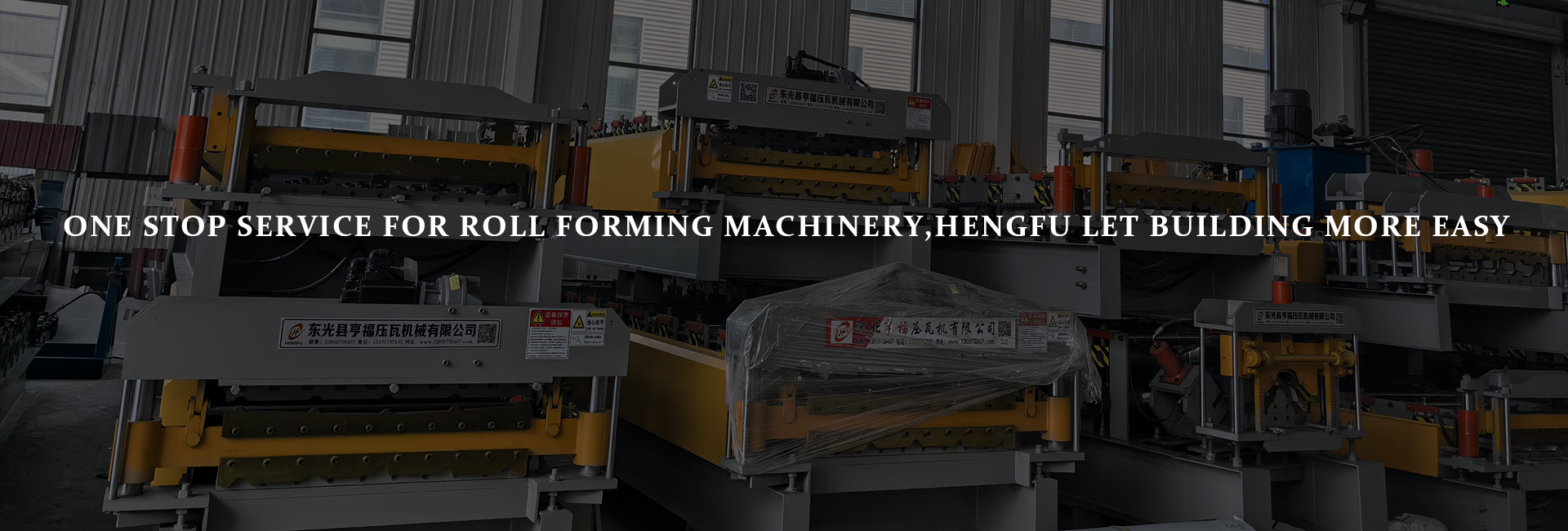In the current era of the booming development of large-scale steel structure buildings, metal roofing, with its lightweight, durability, and aesthetic appeal, has become the preferred choice for numerous landmark venues and industrial plants. As the core equipment for metal roofing production, roof panel forming machines play a pivotal role in large-scale steel structure projects. This article will delve into the technological advantages and functional characteristics of roof panel forming machines, unraveling the inherent logic behind their outstanding performance in large-scale steel structure projects.
1. Introduction: The Industry Value of Metal Roof Forming Machines
1.1 Market Growth Trends of Metal Roofs and the Need for Construction Efficiency
With the accelerated pace of urban construction and industrial upgrading, the number of large-scale steel structure projects has surged, leading to a continuous expansion of the metal roofing market. These projects are characterized by tight schedules and large volumes, imposing stringent requirements on construction efficiency and quality. Traditional construction methods are no longer sufficient to meet these demands, making efficient and precise roof panel forming machines a market necessity.
1.2 Traditional Construction Pain Points vs. the Core Advantages of Forming Machines
Traditional metal roofing construction suffers from high labor dependency, low production efficiency, and difficulty in ensuring precision, often resulting in project delays and cost overruns. Roof panel forming machines, with their automated production and high-precision processing capabilities, effectively address these pain points, significantly enhancing construction efficiency and project quality.
1.3 Core Focus of This Article: Equipment Analysis and Efficiency Enhancement Paths
This article focuses on the application of roof panel forming machines in large-scale steel structure projects, analyzing the alignment between equipment performance and project requirements, and exploring specific paths to achieve efficient construction.
2. Basic Understanding of Metal Roof Forming Machines
2.1 Equipment Definition and Functional Overview
Roof panel forming machines are specialized devices that process metal sheets into roof panels of specific shapes through rolling processes. They can automate the entire production process, from sheet feeding, rolling, and forming to fixed-length cutting, and are widely applied in various metal roofing constructions, serving as key equipment for industrialized production in large-scale steel structure projects.
2.2 Core Components
Rolling System: Composed of multiple sets of high-precision rollers, it gradually deforms metal sheets into the designed panel types. The precision and stability of the rolling system directly determine the quality of roof panel forming.
Transmission Device: Includes components such as motors, gears, and chains, providing stable power for equipment operation and ensuring efficient and coordinated operation of various processes.
Control System: Integrates intelligent control modules and human-machine interaction interfaces, allowing precise setting of operational parameters, real-time monitoring of equipment status, and featuring fault diagnosis and automatic adjustment functions.
2.3 Classification of Mainstream Models
By Number of Layers: Single-layer forming machines are suitable for producing a single panel type; double-layer forming machines can quickly switch between two panel types, meeting the diverse needs of projects.
By Degree of Automation: Semi-automatic forming machines require some manual assistance; fully automatic forming machines achieve unmanned production throughout the entire process, better aligning with the efficient construction requirements of large-scale projects.
2.4 Technical Parameter Analysis Directions
Forming Speed: Reflects the equipment's output per unit time. High-speed operation must be accompanied by guaranteed forming precision to meet the short project schedules of large-scale projects.
Sheet Material Applicability: Covers a variety of materials such as color-coated steel sheets and aluminum-magnesium-manganese alloy sheets, as well as different thickness specifications, accommodating the diverse material selection needs of projects.
Precision Indicators: Include parameters such as dimensional errors and surface flatness. High-precision equipment ensures seamless installation of roof panels, enhancing the overall building quality.
3. Core Mechanisms for Efficiency Enhancement
3.1 Principle of Automated Production Processes Shortening Construction Periods
Roof panel forming machines automatically complete processes such as sheet feeding, forming, and cutting through preset production programs, reducing manual intervention and equipment start-stop times. Their 24-hour continuous operation capability significantly shortens the production cycle, ensuring the timely delivery of large-scale steel structure projects.
3.2 Advantages of High-Precision Forming in Reducing Material Waste
Equipped with high-precision sensors and intelligent control systems, these machines monitor and correct deviations in real-time during the forming process, keeping dimensional errors within a minimal range. This reduces material waste due to high scrap rates, lowering project costs while improving resource utilization efficiency.
3.3 Multi-Specification Sheet Compatibility Reducing Mold Change Costs
Large-scale steel structure projects often involve the need for various panel types and materials. Forming machines support the processing of multi-specification sheets, enabling continuous production of different products through rapid parameter adjustments and mold changes, avoiding time and cost losses caused by frequent mold changes.
3.4 Intelligent Control Systems Optimizing Operational Complexity
Intelligent control systems feature graphical user interfaces, allowing operators to start the equipment by simply inputting production parameters. The system automatically optimizes operational strategies and provides real-time warnings of potential faults, reducing operational difficulty and minimizing production downtime caused by human errors.
4. Recommendations for Selection and Use
4.1 Considerations for Selecting Models Based on Project Scale
For large-scale steel structure projects, priority should be given to fully automatic and double-layer forming machines, whose high production capacity and multi-specification processing capabilities can meet the large-scale and diverse production needs of projects. For smaller projects with a single panel type, semi-automatic single-layer models can be chosen to control procurement costs.
4.2 Importance of Brand and After-Sales Support
Selecting equipment from brands with mature technologies and good reputations ensures greater quality stability and technical support. A comprehensive after-sales service system, including installation and commissioning, personnel training, and rapid repair responses, can ensure the stable operation of equipment in projects, reducing the risk of downtime.
4.3 Tips for Daily Maintenance and Fault Prevention
Regularly clean and lubricate the equipment, inspect roller wear, the tightness of transmission components, and the operating status of the control system. Establish an equipment maintenance archive to predict potential faults in advance through data analysis and formulate preventive maintenance plans to extend the service life of the equipment.
4.4 Interpretation of Industry Certifications and Safety Standards
When purchasing, confirm whether the equipment has passed industry certifications such as CE and ISO to ensure compliance with safety, quality, and environmental standards. Equipment that meets these standards not only performs reliably but also avoids project acceptance risks, ensuring the smooth progress of engineering.
5. Industry Trends and Future Prospects
5.1 Direction of Intelligent Upgrades
In the future, roof panel forming machines will deeply integrate AI regulation and IoT technologies to achieve autonomous optimization of operational parameters, remote monitoring, and fault diagnosis, further enhancing the level of production intelligence to meet the refined management needs of large-scale projects.
5.2 Integration of Green and Environmentally Friendly Technologies
Equipment R&D will place greater emphasis on energy consumption optimization, noise control, and material recycling. For example, the adoption of energy-efficient motors, low-noise transmission devices, and the use of recyclable materials for manufacturing components will drive large-scale steel structure projects towards green construction.
5.3 Predictions on Market Competition Patterns and Technological Iterations
Intensified market competition will prompt enterprises to accelerate technological innovations, with new forming processes and efficient transmission systems continuously emerging. Equipment performance will continue to be upgraded to meet the growing needs of large-scale steel structure projects with higher production efficiency and lower operating costs.
6. Conclusion: Equipment Empowering Construction Transformation
Roof panel forming machines, with their efficient, precise, and intelligent characteristics, have become important supports for the construction of large-scale steel structure projects. Their outstanding performance in shortening construction periods, reducing costs, and improving quality is driving innovation in construction modes. In the future of the booming development of steel structure buildings, selecting appropriate roof panel forming machines is key to ensuring project success. If you wish to further explore equipment selection and application solutions, welcome to explore more professional content and embark on a new journey of efficient construction.







